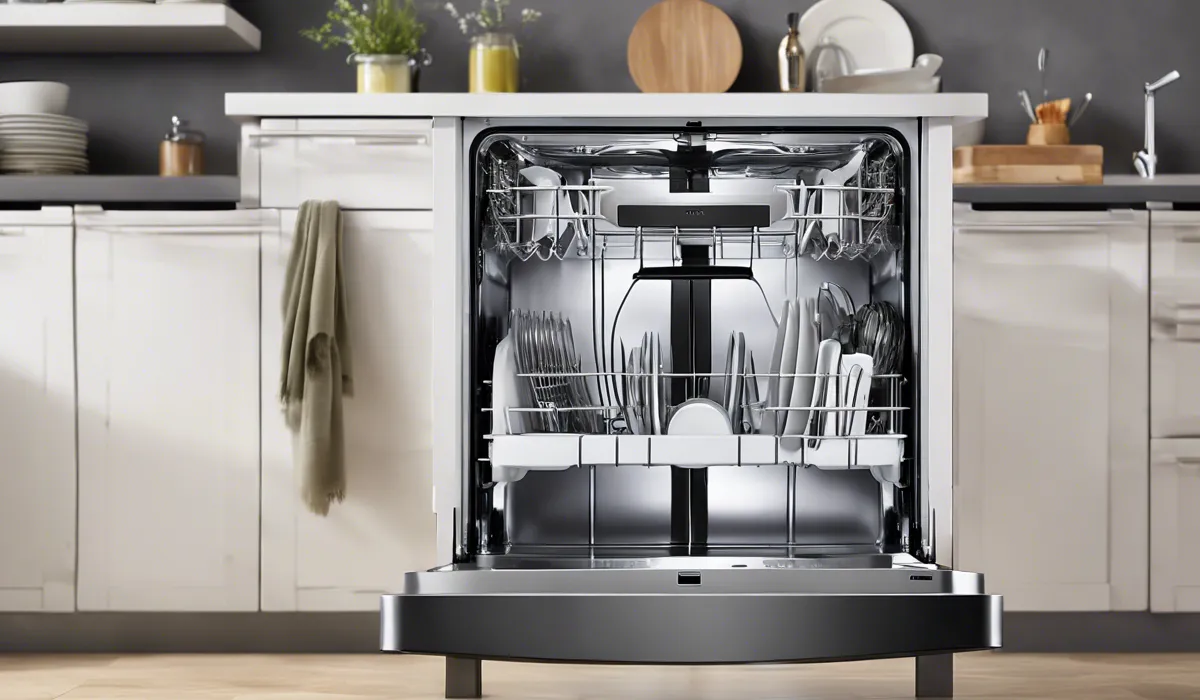How to Remove an Integrated Dishwasher: A Step-by-Step Guide
To remove an integrated dishwasher, first turn off the electricity and water supply. Disconnect water lines and wiring. Unscrew the mounting brackets, slide the dishwasher out, and detach the drain hose.
Preparing for Removal

Ensuring Safety Before Starting
Before embarking on the task of removing an integrated dishwasher, safety comes first. It is crucial to cut off the power supply to avoid any potential electric shocks.
This can be done by unplugging the dishwasher or flipping the corresponding switch on the circuit breaker.
Similarly, turning off the water supply is equally important to prevent any accidental spills or leaks during the process. Always double-check to make sure that both the electricity and water are completely shut off before proceeding.
Clearing the Dishwasher
With the safety measures in place, the next step is to clear out the dishwasher. All dishes and racks should be removed to lighten the load and decrease the risk of damaging anything during removal.
Having an empty dishwasher makes it easier to handle and less cumbersome to maneuver out of its cavity.
Water Supply and Power Disconnection
Locate the water supply valve typically situated under the sink and turn it off. This is a vital step to stop water from flowing into the dishwasher while you work on it.
Then, proceed to disconnect the power by either unplugging the unit or ensuring the circuit breaker is turned off.
Placing towels or a shallow pan beneath the dishwasher’s connections will help catch any water that may drip out once the hoses are disconnected.
Disconnecting the Dishwasher

Accessing the Baseplate
The baseplate or toe-kick panel is your gateway to the dishwasher’s connections. Removing this panel will expose the water supply line, the waste hose, and the electrical supply.
Be sure to keep track of any screws or fasteners that you remove, as you’ll need them if you plan to install a new dishwasher later.
Handling the Water Supply Line
Once you have access to the dishwasher’s underside, the next step is to carefully disconnect the water supply line.
This line is usually made of copper or a flexible material and should be handled gently to avoid any damage or kinks.
Use an appropriate wrench to loosen the connection and detach the line, being mindful of any residual water that may escape.
Detaching the Waste Hose
The waste hose is responsible for expelling used water from the dishwasher. Disconnect it carefully from its connection point, which is typically located either under the sink or at the back of the dishwasher.
Ensure that the end of the hose is elevated to prevent any remaining water from spilling out.
Electrical Supply and Mounting
With the water lines addressed, it is time to unhook the dishwasher from its electrical supply.
For hardwired units, this may involve removing wire nuts and separating the wires, whereas a plugged-in unit simply needs to be unplugged.
Finally, remove any screws or brackets that secure the dishwasher to the surrounding cabinetry or countertop. These fasteners are crucial to stabilize the dishwasher during use, so they must be removed to allow for the unit’s extraction.
Removing the Dishwasher

Sliding Out the Unit
Gently begin to slide the dishwasher out from its cavity. Take great care to avoid any sudden movements that could damage the water or electrical lines still connected.
This should be done slowly and with control, preferably with the help of another person to guide the unit and ensure nothing gets caught or snagged.
Checking for Additional Attachments
As you remove the dishwasher, stay vigilant for any additional attachments, such as wiring or hoses, that you may have missed.
Detach these carefully to ensure that the dishwasher is completely free from any connections to the home. Overlooking these could result in damage to both the dishwasher and the infrastructure of your kitchen.
Adjusting the Dishwasher Legs
If resistance is met while sliding out the dishwasher, it may be necessary to adjust the unit’s legs. These can be screwed in or out to change the height of the dishwasher, allowing it to clear any uneven flooring or thresholds.
Adjusting the legs can also help if the dishwasher is snugly fitted and requires a bit more clearance to be removed.
Maneuvering the Dishwasher Safely Out of the Kitchen
Once completely detached, it is time to remove the dishwasher from the kitchen. This should be done with care to avoid scraping the flooring or banging into cabinets and doorways.
If the kitchen layout allows, pulling the dishwasher straight out onto a protective surface like cardboard or a drop cloth can help prevent any potential damage.
Once out of the kitchen, you can then decide whether to dispose of the old dishwasher or keep it for recycling or donation.
FAQs About Removing an Integrated Dishwasher
What is the first step in removing an integrated dishwasher?
The first step is to turn off the electricity and water supply to the dishwasher.
How do you disconnect an integrated dishwasher from water lines?
Disconnect the water lines by unscrewing the connections from the dishwasher, usually found under the sink or behind the dishwasher.
What should you do with the wiring when removing an integrated dishwasher?
After turning off the power, disconnect the wiring by unscrewing wire nuts or disconnecting the plug from the outlet if it is not hardwired.
How can you detach the dishwasher from its position?
Unscrew the mounting brackets that secure the dishwasher to the countertop or cabinetry, and then carefully slide the dishwasher out.
What is the final step in removing an integrated dishwasher?
The final step is to detach the drain hose from beneath the sink or from the back of the dishwasher after it has been slid out from its enclosure.
Final Thoughts
Removing an integrated dishwasher requires careful preparation and execution. Ensure safety by turning off the electricity and water supply.
Disconnect the water lines and wiring, unscrew the mounting brackets, gently slide the unit out, and finally, remove the drain hose.
These steps help to successfully extract the dishwasher without causing damage to the appliance or the surrounding cabinetry.
Useful Resources
- https://www.columbusga.gov/publicworks/Divisions/Integrated-Waste/Columbus-GA-Recycles-App#!rc-cpage=250624
- https://www.glendaleca.gov/government/departments/public-works/integrated-waste-management/collection-services
- https://stlouiscountymo.gov/st-louis-county-departments/transportation-and-public-works/residential-building/plumbing-work-residential/





